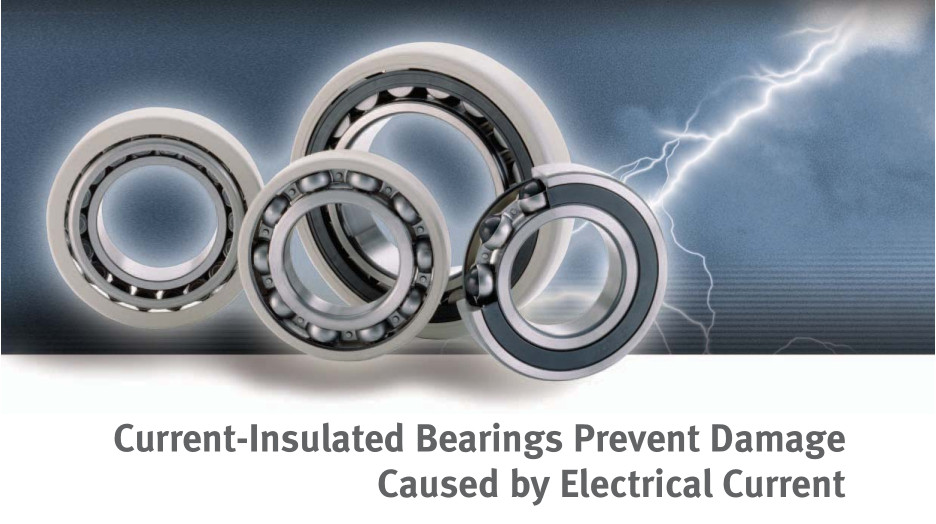Current-Insulated Bearings as a Preventive Measure
Current-Insulated Bearings as a Preventive Measure
As a rule, it is very difficult to eliminate the causes of bearing voltages that are induced by the motor. Nevertheless, it is possible to avoid damage to the bearing, if the flow of current can either be prevented or at least significantly reduced. Many types of current-insulated rolling bearings are available today for this very purpose.
Which components need to be insulated depends on the type of voltage involved:
Induced Voltage along the Shaft
This produces a circular current,which is closed via bearing 1, the housing, and bearing 2. Such shaft voltages are often the result of an asymmetrical distribution of the magnetic flux within the motor. This is especially evident in motors with only a few pairs of poles. If this is the case, it is sufficient to disrupt the flow of current by insulating
one of the two bearings.
Voltage between the Shaft and the Housing

In this case, electrical currents flow through each of the two bearings in the same direction. The most likely cause is the converters’ common-mode voltage. This type of a situation might require insulating both bearings.
Which type of electrical insulation is to be used depends on the time response of the given voltages.With DC voltage and low-frequency AC voltage, the choice depends on the ohmic resistance of the bearing. With higher-frequency AC voltage (often encountered in converters!),it depends on the capacitive reactance of the bearing. Basically, a current-insulated bearing acts like a resistor and capacitor connected in parallel. To ensure good insulation, the ohmic resistance should be as high as possible, and the apacitance should be as low as possible.